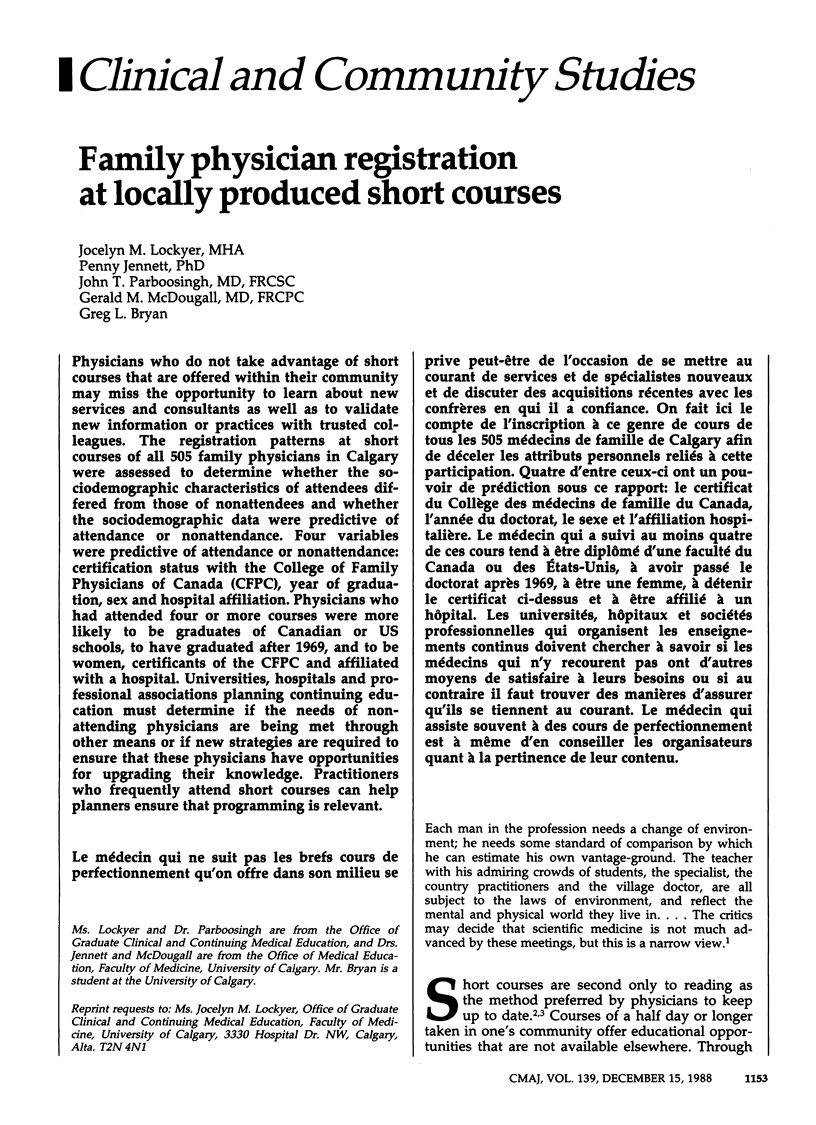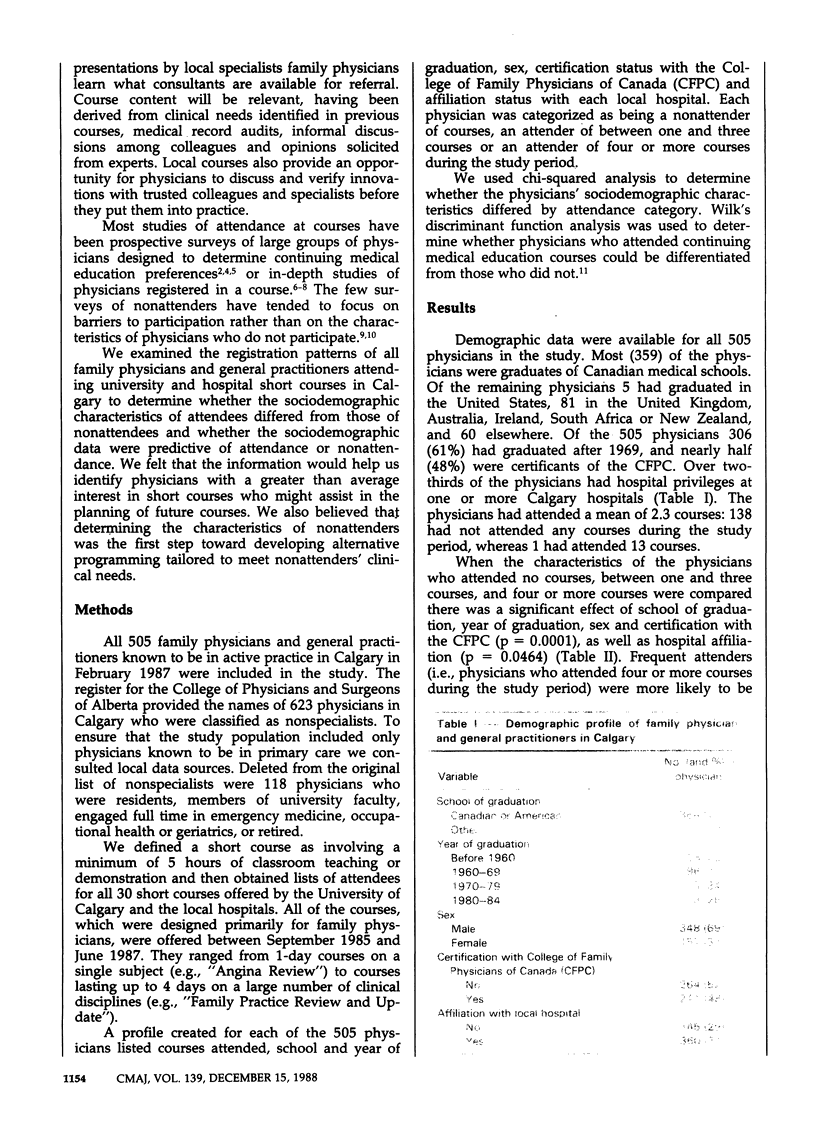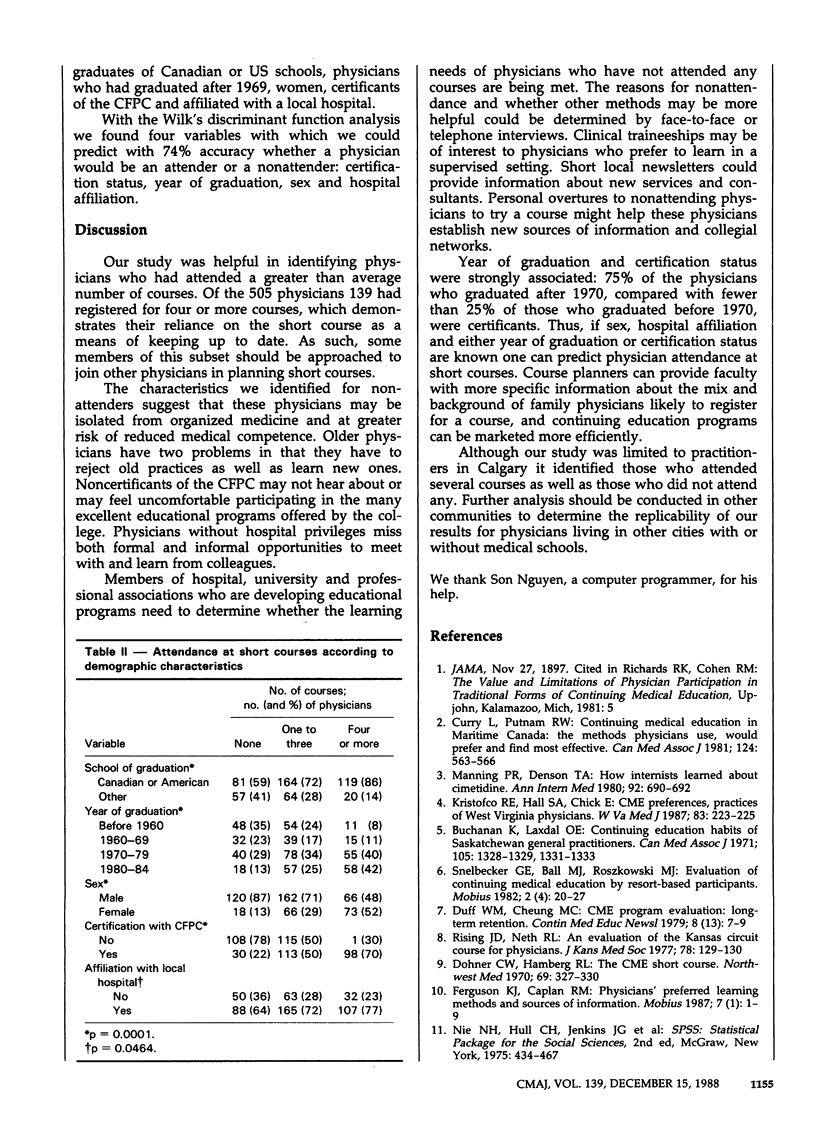Abstract
Physicians who do not take advantage of short courses that are offered within their community may miss the opportunity to learn about new services and consultants as well as to validate new information or practices with trusted colleagues. The registration patterns at short courses of all 505 family physicians in Calgary were assessed to determine whether the sociodemographic characteristics of attendees differed from those of nonattendees and whether the sociodemographic data were predictive of attendance or nonattendance. Four variables were predictive of attendance or nonattendance: certification status with the College of Family Physicians of Canada (CFPC), year of graduation, sex and hospital affiliation. Physicians who had attended four or more courses were more likely to be graduates of Canadian or US schools, to have graduated after 1969, and to be women, certificants of the CFPC and affiliated with a hospital. Universities, hospitals and professional associations planning continuing education must determine if the needs of nonattending physicians are being met through other means or if new strategies are required to ensure that these physicians have opportunities for upgrading their knowledge. Practitioners who frequently attend short courses can help planners ensure that programming is relevant.
Full text
PDF


Selected References
These references are in PubMed. This may not be the complete list of references from this article.
- Buchanan K., Laxdal O. E. Continuing education habits of Saskatchewan general practitioners. Can Med Assoc J. 1971 Dec 18;105(12):1328–passim. [PMC free article] [PubMed] [Google Scholar]
- Curry L., Putnam R. W. Continuing medical education in Maritime Canada: the methods physicians use, would prefer and find most effective. Can Med Assoc J. 1981 Mar 1;124(5):563–566. [PMC free article] [PubMed] [Google Scholar]
- Dohner C. W., Hamberg R. L. Continuing medical education. The CME short course. Northwest Med. 1970 May;69(5):327–330. [PubMed] [Google Scholar]
- Hodapp W. J., Cline R. S. Components of a successful learning resource center for health professionals. Mobius. 1982 Jan;2(1):20–30. doi: 10.1002/chp.4760020105. [DOI] [PubMed] [Google Scholar]
- Kristofco R. E., Hall S. A., Chick E. Needs assessment survey. CME preferences, practices of West Virginia physicians. W V Med J. 1987 May;83(5):223–225. [PubMed] [Google Scholar]
- Manning P. R., Denson T. A. How internists learned about cimetidine. Ann Intern Med. 1980 May;92(5):690–692. doi: 10.7326/0003-4819-92-5-690. [DOI] [PubMed] [Google Scholar]
- Rising J. D., Neth R. L. Continuing medical education: an evaluation of the Kansas Circuit Course for Physicians. J Kans Med Soc. 1977 Mar;78(3):129–130. [PubMed] [Google Scholar]


